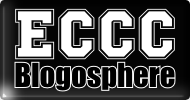Friel, Joe. The Cyclist's Training Bible, Third Edition. Boulder>: VeloPress, 2003. Thank you, thank you, thank you for the best work on the topic right now. What a wonderful book. It's chock full of useful advice and sage wisdom. Friel is a hard-up, no nonsense guy who cares about performance even more than I do, if that's possible.
Pruitt, Andrew L. Andy Pruitt's Complete Medical Guide for Cyclists. Boulder, CO: VeloPress, 2006. This is my standard reference for sizing, saddle positioning, and orthopedic issues on the bicycle. It's a highly recommended read for all riders, and is more recommended for more competitive and/or older riders.
Jones, Calvin. Big Blue Book of Bicycle Repair. Saint Paul, MN: Park Tool Company, 2005. Park Tool Part # BBB-1. This is an excellent introduction to bicycle repair for beginners, and is now the default book that I recommend. It's full of wonderful, full-color, clear, crisp photos and equally vivid descriptions. This is everything that I could want from a repair book, just watch out for constant recommendations for other Park Tool goods.
USA Cycling Manual: Level 3 Coaching Certification. Colorado Springs: USA Cycling Coaching Association, 2007. This is the book that you read to get the same coaching certification. It's a well assembled book on riding that distills the knowledge of many of the other books in this list.
Daniels, Jack. Daniels' Running Formula. Champaign, IL: Human Kinetics, 2005. What is a book on running doing here? I include this excellent, highly technical training book for several reasons. First, it was recommended by none other than Glenn Swan of Swan Cycles. Secondly, I agree with Swan that this book is an excellent piece of general theory of physiology and training, and implements the periodization principle on which all competent modern programs are based. Thirdly, if you are a triathlete, this is a useful book. A good, dense read.
Bompa, Tudor. Periodization: Theory and Methodology of Training. Champaign, IL: Human Kinetics, 1999. Remember what I said above, and in previous blog postings, about periodication of training? Well, Dr. Bompa thought of the idea in the 1960 as a Romanian coach, and used it to help eastern Europe dominate international athletic events for decades. If you want the full story, go straight to the source. I haven't completed or mastered this one yet, but I think that any competen cycling coach should know this book inside and out.
Prehn, Thomas. Racing Tactics for Cyclists.
Wilson, David Gordon. Bicycling Science, Third Edition. Cambridge: MIT Press, 2004. The latest edition of another classic. Dave Wilson is a professor of mechanical engineering at MIT, and an avid bicyclist. He decided to combine his passions and his resources some decades ago to put together what has come to be the canonical technical work on cycling, with a lot of good theory and references. This should be a part of any technical cyclist's library, no questions asked.
Schraner, Gerd. The Art of Wheelbuilding.
Paterek, Tim. The Paterek Manual for Bicycle Framebuilders.
Forester, John. Effective Cycling, Sixth Edition. Cambridge: MIT Press, 2001. Oh boy, is John Forester pissed off! This is another standard read about cyclinng in traffic. This book tries, I think a little too hard, to be the be-all and end-all of bicycling books, and to bring people onto its program. It's well, though agressively written. Still, if I had to recommend one and only one book on bicycling My main complaint is that Forester tends to confuse fact with opinion. As long as you realize that the entire book is written like this, it's fine.
Ballantine, Richard. Richard's 21st-Century Bicycle Book.
Phinney, Davis and Carpeneter, Connie. Training for Cycling: The Ultimate Guide to Improved Performance.
Borysewicz, Edward. Bicycle Road Racing: Complete Program for Training and Competition.
Allen, Hunter and Coggan, Andrew. Training and Racing with a Power Meter.
Hurst, Robert. The Art of Urban Cycling: Lessons From The Street.
Fehlau, Gunnar. The Recumbent Bicycle. Williamson, MI: Out Your Backdoor Press, 2003. This is, as it says, a book all about recumbents that I haven't had a chance to read in its entirety. It's a semi-technical read with lots of useful info. I wish I had read it back when we were working on the HPV project. I'd love to experiment with a recumbent at some point, it's a shame they're not mainstream since they're really, really efficient!
Langley, Jim. Bicycling Magazine's Complete Guide to Bicycle Maintenance and Repair, 4th Ed (now in 5th Ed.).
Perry, David. Bike Cult: The Ultimate Guide to Human-Powered Vehicles. New York: Four Walls Eight Windows, 1995. A book on bicycles, like the Ballantine book, with a somewhat different tone. It's a very cool book with lots of esoteric facts.The best thing is, Dave Perry himself runs and works at Bike Works in Manhattan's Lower East Side. Good read.
Carmichael, Chris. The Ultimate Ride.
Armstrong, Lance and Carmichael, Chris. The Lance Armstrong Performance Program. Rodale Press, 2000. I got this book at a Barnes & Noble because it was there, and haven't really read through it. It's in the same category as the previous Carmichael book: good, solid advice, but nothing revolutionary.
Barnett, John. Barnett's Manual: Analysis and Procedures for Bicycle Mechanics.
Graham, Brad and McGowan, Kathy. Atomic Zombie's Bicycle Builder's Bonanza.
These books are worth mentioning in passing. I haven't found them to be particularly useful, but you might. I bought them when I wanted to bike across the USA, but then I discoverd Adventure Cycling, and eventually, Bike & Build. Routing cross country bike trips is hard, and in the end, it depends on what kind of ride you want to do.
Christian, Lue and Shannon. Cycling Across North America: A Leisurely Route from Coast to Coast. San Francisco: Van der Plas Publications, 2000.
Siegert, Barbara. Bicycle Across America. Nicolin Fields Publishing, 2000.
It took me many hours to put this list together, and many hundreds of dollars and hours to buy and read all of these books!








